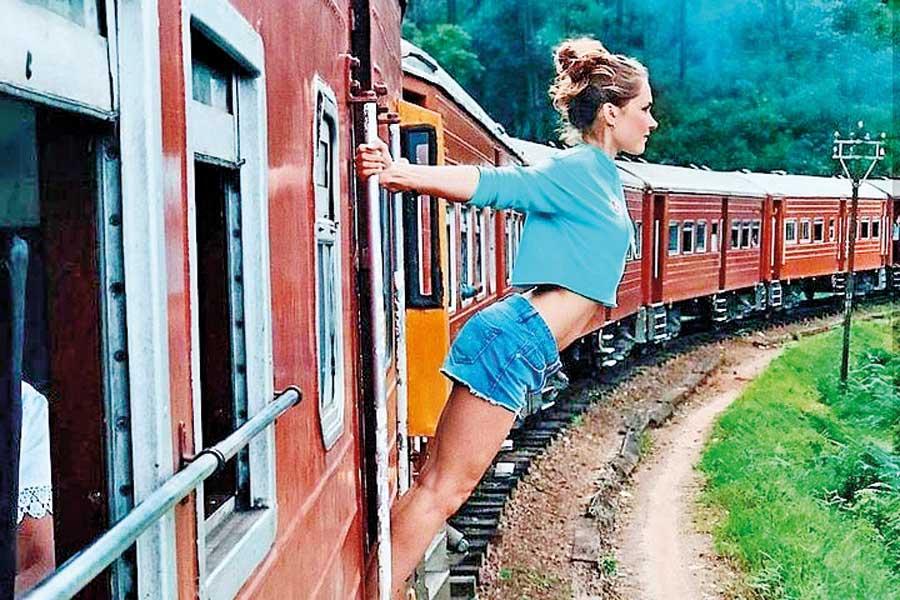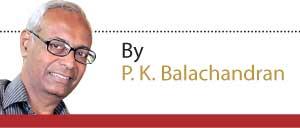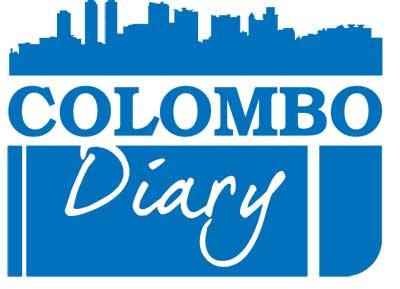12 Jul 2023 - {{hitsCtrl.values.hits}}

The work of SLR employees is truly admirable in managing to successfully operate and maintain the railway network with generally old equipment and limited funds
Lack of funds combined with the absence of meaningful initiatives on the part of all governments has resulted in a very poor exploitation of SLR’s potential
An enduring feature of tourism in Sri Lanka has been the Westerners’ fascination with the Sri Lanka Railways (SLR). Foreigners go into raptures over SLR’s old-world carriages, its quaint British-era stations and its scenic routes. The journey into the past, which is what a journey on SLR is, kindles nostalgia among seniors and is an altogether new experience for young backpackers.
British-era stations and its scenic routes. The journey into the past, which is what a journey on SLR is, kindles nostalgia among seniors and is an altogether new experience for young backpackers.
Indeed, there is much that is charming about the SLR. But it is also has glaring flaws, that might lead to irredeemable decay if not corrected now. Currently, the SLR is a museum piece, but it cannot be one forever. It is badly in need of modernization both to survive and to play a meaningful role in developing Sri Lanka.
The lack of modernization has had a telling effect on the financial health and technical competence of the SLR. Not a day passes without a derailment or the cancellation of some service.
Johan Georget, a transport specialist at the Asian Development Bank (ADB)- which is funding modernization- sums up the state of the SLR succinctly and fairly. He says: “Sri Lanka Railways was established in 1858, but has received comparatively limited investments since the 1970s. Consequently, the sector still operates very manually, and in many aspects, SLR can be considered as a heritage railway.
“With this perspective, the work of SLR employees is truly admirable in managing to successfully operate and maintain the railway network every day, with generally old equipment and limited funds, in a tropical climate that is harsh on the infrastructure.”
The lack of funds combined with the absence of meaningful initiatives on the part of successive governments, has resulted in a very poor exploitation of SLR’s potential.
The SLR accounts for only 6% of the passenger traffic and 0.7% of the freight in the island. In its early years, when it was primarily a freight carrier and the lorry revolution had not taken place, the Ceylon Government Railways (as SLR was then known) accounted for 35% of passenger traffic and 80% of the goods traffic.
Lorries started being used for ferrying goods when the limitations on lorry transport were lifted in 1951. As a result, railway development stalled, says G.W.S Sisira Kumara, a top SLR official, in his paper in the Economic Review dated August-September 2011. Kumara argues that Sri Lankan Governments should have given priority to rail transport because it is cheaper than road transport.
He said: “A train consumes 200 litres of fuel for a 50 km journey, while the bus needs 10 litres for a 50 km journey. But to transport 1800 passengers, 30 buses and 300 litres of fuel will be required. The manpower required to run the buses will be 60 while the train will require only four. The 300 trains in the SLR are equivalent to 9000 buses.” Trains are also environment friendly while buses pollute the atmosphere.
However, traders and passengers preferred road transport because this had a wider reach. And being under private ownership, unlike the SLR, road transport operators were flexible. As a result, the SLR became progressively weak financially.
 Ravi Ratnasabapathy of Advocata Institute said that the SLR has been losing money since 1947. “The expenditure of the railways exceeded costs by 10% in 1950. But by 1968, this had grown to 52.4%. The wages policy of the government and the policy limitations imposed by the government in the pricing of passenger and goods transport were factors that contributed to this situation. This has not changed much. In 2016 costs exceeded revenues by 49.4%,” he said.
Ravi Ratnasabapathy of Advocata Institute said that the SLR has been losing money since 1947. “The expenditure of the railways exceeded costs by 10% in 1950. But by 1968, this had grown to 52.4%. The wages policy of the government and the policy limitations imposed by the government in the pricing of passenger and goods transport were factors that contributed to this situation. This has not changed much. In 2016 costs exceeded revenues by 49.4%,” he said.
Successive governments have kept passenger fares low as social welfare became the dominant creed in the mid-1950s.
“Fares per km range from 50 cents to a maximum of Rs.2.00 for 2nd and 3rd class travel. 1st class fares range from Rs.1.60-3.60 per km. Revenue does not cover even salaries. Salaries exceeded revenues by 31.89% in 2016. Based on the current operating and cost structure fares would need to double just to meet recurring expenses,” Ratnasabapathy points out.
The SLR has huge assets, but these are idling. Lease arrears not collected amounted to Rs.1.8 bn at the end of 2016. The Auditor General noted that lands of about 12,000 acres belonging to the SLR had remained idle for about 150 years without being given on lease or being utilised, Ratnasabapathy points out.
The perpetual financial crunch has badly affected maintenance, renewal and development of the rolling stock and other technical facilities. According to the Transport Ministry, 65% of the rolling stock is over 30-35 years old. Because of technical difficulties, only 42% of the trains run on time.
Due to bad rolling stock and inadequate facilities, accidents are frequent. The Sunday Times said that almost 200 people had died in train-related accidents in 2022. The statistics covered deaths due to crossing rail tracks, suicide, and collision at level crossings. More than 400 suffered minor to severe injuries. Daily Mirror reported that there were 117 derailments in 2022, up from 111 in 2021. And in the first of 2023 itself, there had been 54 derailments.
ADB’s Help
The Asian Development Bank (ADB) had approved a US$ 160 million loan to modernise the operations and improve the efficiency of the SLR. The ADB’s project would: (I) improve the operational efficiency of the railway network by addressing key operating bottlenecks with the modernization of the telecommunications, ticketing, operations headquarter, and train control center systems; (ii) upgrade the railway workshop at Ratmalana, and procure rolling stock and track maintenance equipment; (iii) improve railway safety mainly through the construction of housing blocks to support the future resettlement of encroachers, and the improvement of Colombo Fort and Maradana stations; and (iv) upgrade the Sri Lanka German Railway Technical Training Center (SLGRTTC); and (v) support project implementation capacity and readiness, notably for the future modernization of the Kelani Valley line and other suburban lines.
Be that as it may, the SLR, on its own, should take certain steps, Ratnasabapathy said. He recommended the adjustment of fares and tariffs to better reflect costs and improved services; leasing of more real estate and advertising space at market prices, and partnering with the private sector to provide freight and ancillary services such as catering, courier, real estate management. Even maintenance of toilets could be privatised.
The SLR currently partners with the private sector to provide a luxury carriage on selected routes. But this could be expanded to provide additional services at peak times to cater to office commuters, Ratnasabapathy said. Idle lands could be redeveloped in partnership with private developers. Stations could be used to accommodate shops and restaurants. The SLR should cease to be a “drain on the Treasury”.
But fair play must be ensured in privatization, he insisted. There should be competitive public tendering. The public should be informed about the arguments for contracting a public-private partnership, the scope and terms of the contract, and its estimated value so that the public are assured that things are above board.
“Some PPP contracts can be extremely complex and public officials may be overwhelmed. Capacity building within the public sector in this area is essential. Setting up an independent PPP advisory unit within the government, staffed by competent people, is advisable. Judicious use of external advisors may be necessary, depending on the nature of the contract. Above all, there should be post-implementation monitoring to ensure that value is delivered,” Ratnasabapathy said.
28 Dec 2024 28 Dec 2024
28 Dec 2024 28 Dec 2024
28 Dec 2024 28 Dec 2024
28 Dec 2024 28 Dec 2024
28 Dec 2024 28 Dec 2024